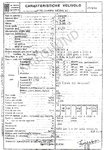And, finally, to the contrary of the general opinion that the "Regia Aeronautica" had a special treatment by the Fascist Government, most of the money spent in the Italian Armed Forces in the '30 did actually go to the "Regia Marina"
fiscal year budget in lire's milions Army Navy Air Force
1930/1 3230 1582 787
1931/2 3067 1626 775
1932/3 3068 1614 770
1933/4 2700 1440 720
1934/5 3036 1360 896
1935/6 7472 2927 2339
1936/7 9460 3491 3728
1937/8 6250 3041 4086
1938/9 7146 3500 4490
1939/0 15350 5291 7228






